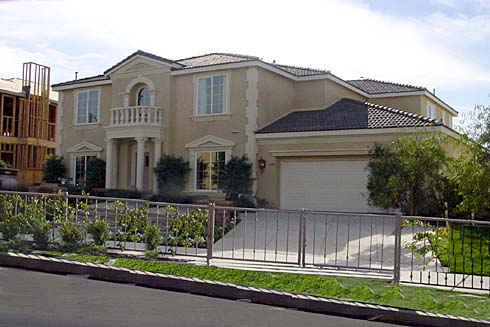VENEER
Unveiling Elegance: The Art of Veneer in Real Estate Design
Introduction:
Defining Veneer:
Veneer in real estate refers to a thin layer of wood or brick applied to the exterior surface of a building. This covering serves both functional and aesthetic purposes, allowing for the enhancement of a structure's appearance while often concealing a less attractive or less expensive underlying material.
Key Aspects of Veneer in Real Estate Design:
Enhancing Aesthetics:
One of the primary purposes of veneer is to enhance the overall aesthetics of a property. By providing a visually appealing outer layer, veneer can elevate the building's appearance, creating a sense of elegance and sophistication.
Concealing Less Attractive Surfaces:
Veneer acts as a cover for surfaces that may be less visually appealing or made of materials that are more cost-effective but lack the desired aesthetic qualities. This allows property owners to achieve a high-end look without the associated costs.
Versatility in Design:
Veneer offers a versatile design element that can be customized to match various architectural styles and preferences. Whether it's a rustic brick veneer or a sleek wood veneer, the options are vast, allowing for creativity in design.
Cost-Effective Transformation:
Veneer provides a cost-effective way to transform the exterior of a building. Instead of completely reconstructing or replacing existing surfaces, applying veneer offers a more budget-friendly option for achieving a desired aesthetic.
Benefits of Veneer in Real Estate:
Curb Appeal:
Veneer significantly contributes to curb appeal, making a property more visually appealing and inviting. This is particularly important for attracting potential buyers or tenants.
Weather Resistance:
Veneer materials are often chosen for their durability and resistance to weather elements. This not only enhances the longevity of the exterior but also reduces maintenance costs over time.
Property Value Enhancement:
The aesthetic improvements achieved through veneer can positively impact the perceived value of a property. This can result in increased market value and a potentially faster sale or rental.
Customization:
Veneer allows for a high degree of customization, enabling property owners to tailor the exterior to suit their design preferences and complement the surrounding environment.
Customization:
Veneer allows for a high degree of customization, enabling property owners to tailor the exterior to suit their design preferences and complement the surrounding environment.
Conclusion:
Veneer stands as a testament to the artistry and practicality in real estate design. As a versatile tool, it offers a transformative solution for enhancing the exterior of buildings, concealing less attractive surfaces, and adding an element of sophistication. The careful selection and application of veneer contribute not only to the visual appeal of a property but also to its overall market value. In the dynamic world of real estate, veneer emerges as a valuable design choice, marrying form and function to create lasting impressions.
MORE REAL ESTATE TERMS
A, B, C, D, E, F, G, H, I, J, K, L, M, N, O, P, Q, R, S, T, U, V, W, X, Y, Z
Featured New Home

Featured Mortgage Brokers
- BANK OF ENGLAND, OLD SAYBROOK, CT
44 POND RD
OLD SAYBROOK, CT 6475 - EQUITY LOANS LLC, NEW CITY, NY
216 CONGERS RD STE 3A
NEW CITY, NY 10956 - Blue Square Mortgage LLC, mortgage broker in Seattle, WA
4212 33rd Ave W
Seattle, WA 98199 - MCCUE MORTGAGE COMPANY, NEW BRITAIN, CT
1 LIBERTY SQ
NEW BRITAIN, CT 6051 - PROFICIO MORTGAGE VENTURES LLC, BRUNSWICK, OH
2950 WESTWAY DR STE 101
BRUNSWICK, OH 44212